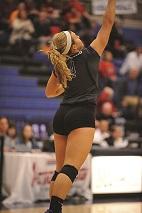
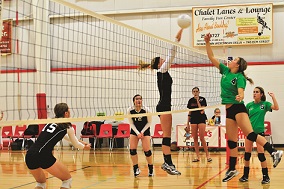
In any Olympic cycle, it’s one of the most popular sports to watch. In addition, pro beach volleyball tours, featuring top national and international players, are a big draw for spectators. The Waupaca Boatride Volleyball tournament, known as the US Open of Grass Volleyball, has attendance that goes up each year.
And the participation numbers also illustrate the success of the sport. USA Volleyball boasts more than 314,000 total members, and 5,400 clubs participate in regional competition. The sport’s national governing body also saw a 260 percent spike in social media followers between 2013 and 2014. In the latest figures from the National Federation of State High School Associations, volleyball finally surpassed basketball to become the second most popular high school sport for girls. (Track and field still holds the top spot.)
In other words, there’s plenty of volleyball to go around. And those are just participation figures. The economic impact of the sport is staggering too.
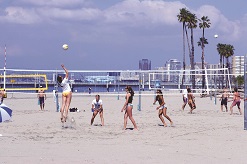
Even areas that don’t currently host the sport are interested in doing so. Sports tourism officials in Wildwood, New Jersey, want to roll out the welcome mat. After all, the Wildwoods Convention Center has plenty of space — both inside and off the boardwalk on beaches that hug the Atlantic Ocean.
And in between California and New Jersey, in places like Wisconsin and Texas, new markets for volleyball leagues and tournaments are opening up for adults and homeschooled children.
As Doug Beal, chief executive officer of USA Volleyball wrote in the organization’s 2014 annual report, released in June 2015, “We’ve seen participation grow to record levels for nearly all of our programs: coaching education, beach and indoor high performance, social media, membership, tryouts, clinics and qualifiers. Volleyball has never been more popular.”
But what does it take to host the sport? First of all, facilities.
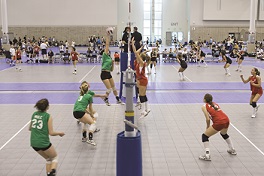
As volleyball as a sport has grown, so have the destination cities and venues that host the game. “We do volleyball well,” admits Brooks Hierstein, sports, sales and service manager for the Hampton (Virginia) Convention & Visitor Bureau. “It brings a large economic impact to the city, and volleyball families travel well together. It’s a sport we definitely enjoy having here.”
For proof of Hampton’s volleyball finesse, look no further than the Mid-Atlantic Power League, which consists of elite girls’ teams from New York, Pennsylvania, New Jersey, Delaware, Maryland, Virginia, North Carolina and South Carolina. The league has scheduled its first major competition of 2016 at the Boo Williams Sportsplex and the Hampton Road Convention Center for Jan. 30 and 31. An estimated 4,000 players from 150 teams are expected to participate.
Collectively, both venues offer 34 courts — some wood and some modular. The 135,000-square foot Boo Williams Sportsplex opened in 2008 and was specifically designed for amateur athletic competition. In addition to volleyball, the center hosts basketball, indoor field hockey, dance, cheerleading and other sports events. It is the largest facility of its kind between Washington, D.C., and Greensboro, N.C.
Additionally, the convention center in April will host the Old Dominion Region Volleyball Association Championships, a co-ed youth tournament with 100 teams. And the Boo Williams Sportsplex will host an Old Dominion Region Bid Tournament a few weeks later.
Hampton officials also hope to make a play for higher-profile sand volleyball tournaments at Buckroe Beach, located on Chesapeake Bay, already home to many recreation leagues and tournaments.

After years of lobbying, the American Volleyball Coaches Association in January approved beach volleyball as an NCAA championship sport for women. The first NCAA Championship will be held next spring.
Beach volleyball also is making inroads in Special Olympics; it was introduced as an exhibition sport in Athens in 2011 and became an official Unified Sports event at the 2015 Special Olympics World Games in Los Angeles.
These developments open up several new volleyball opportunities in cities all over the country.
The Spectator Experience
Destinations don’t just become places to play the sport; they become places to go to watch it. One area that established itself long ago as a beach volleyball mecca is Long Beach, California, where permanent nets can be found at Belmont Shores. The ASICS World Series of Beach Volleyball, considered “the most important beach volleyball event in America this year,” according to the Long Beach Press-Telegram, attracted tens of thousands of spectators to watch the FIVB Grand Slam tournament that doubled as a 2016 U.S. Olympic Team qualifier. The NBC Sports Network televised 14 hours of coverage. Long Beach’s public beach volleyball courts also were used for the Special Olympics World Games.
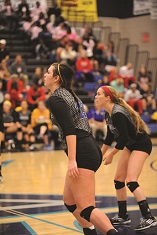 The city, located on Southern California’s Pacific coast, offers plenty of places to play indoor volleyball, too, according to Bob Maguglin, director of public relations for the Long Beach Convention & Visitors Bureau. The Long Beach Arena at the Long Beach Convention & Entertainment Center seats 13,500 spectators and can be used for volleyball, basketball, hockey, gymnastics, boxing, mixed martial arts and even rodeo competitions. It also served as the site for volleyball during the 1984 Summer Olympics, held in Los Angeles. Additionally, the Walter Pyramid at California State University, Long Beach, is a 5,000-seat arena that can accommodate five volleyball courts (or three basketball courts).
The city, located on Southern California’s Pacific coast, offers plenty of places to play indoor volleyball, too, according to Bob Maguglin, director of public relations for the Long Beach Convention & Visitors Bureau. The Long Beach Arena at the Long Beach Convention & Entertainment Center seats 13,500 spectators and can be used for volleyball, basketball, hockey, gymnastics, boxing, mixed martial arts and even rodeo competitions. It also served as the site for volleyball during the 1984 Summer Olympics, held in Los Angeles. Additionally, the Walter Pyramid at California State University, Long Beach, is a 5,000-seat arena that can accommodate five volleyball courts (or three basketball courts).
In Rutherford County, Tennessee, the demand for sand volleyball is increasing, says Barbara Wolke, vice president of the Rutherford County Convention and Visitors Bureau. And that is why a private-ownership group opened the Murfreesboro Field House in September, containing four indoor basketball courts, a turf field for baseball and soccer, and four outdoor sand volleyball courts. The facility, a former racquet club set on a 10-acre site, is expected to become a hub for local sports teams, as well as host large regional tournaments.
The Murphy Center Complex at Middle Tennessee State University in Murfreesboro also hosts multiple indoor volleyball events, including the Tennessee Secondary Athletic Association’s state tournament (an annual event there since 1996) and the 2013 Conference USA Women’s Volleyball Championship.
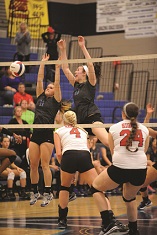 The Wildwoods Convention Center — which has hosted just about any other sport you can think of since it opened in 2002 — has been working to secure both beach and indoor volleyball events for years, according to Ben Rose, director of marketing and public relations for the Greater Wildwoods Tourism Improvement and Development Authority.
The Wildwoods Convention Center — which has hosted just about any other sport you can think of since it opened in 2002 — has been working to secure both beach and indoor volleyball events for years, according to Ben Rose, director of marketing and public relations for the Greater Wildwoods Tourism Improvement and Development Authority.
“It’s a natural here,” he says, adding that the beaches extend for about five miles, and the sand season runs from April through October. “Beach lacrosse is exploding up here. So is beach soccer.” Tournaments in those sports began small, eventually gaining in size over time, and Rose can envision the same thing happening with beach volleyball.
New Players, New Opportunities
Conway, Arkansas, set its sights on hosting volleyball at the Don Owen Complex and the McGee Center. And by mid-September, Conway already had eight one-day and two weekend-long volleyball tournaments on the calendar for early 2016. Additionally, Hendrix College and the University of Central Arkansas both host college-level volleyball tournaments.
Other cities in the midst of a volleyball revolution include Duncanville, Texas, and Wisconsin Dells, Wisconsin. In Duncanville, the former privately owned Bob Knight Fieldhouse is now the Duncanville Fieldhouse — an expansive 111,000-square-foot training facility with 10 hardwood volleyball courts (and six basketball courts) owned and operated by the city in an area where many kids come from underprivileged families.
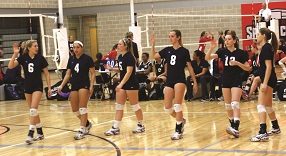
Today, four clubs featuring girls between the ages of 9 and 18 operate regularly out of the field house, which Brice says has created a “synergy” between the venue and the greater volleyball community. Several area homeschool associations also use the facility, and she’s noticed an increase in the number of adults looking for leagues, too.
“Do I think those are niches? Absolutely,” she says. “A lot of the adults are tied up with their own children playing volleyball or coaching their kids’ volleyball team and are looking to play the game themselves.”
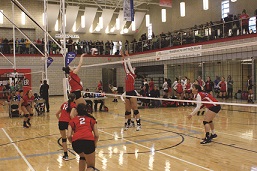 Working with the Volleyball Community
Working with the Volleyball Community
Cities have learned that one successful volleyball event tends to attract another. They’re also starting to tap into local playing clubs and communities.
Tifani Jones, sales director for the Wisconsin Dells Visitor & Convention Bureau, has witnessed the Dells — already a tourist destination as “the Waterpark Capital of the World — become a major destination for volleyball. “We do such a high volume of youth volleyball that our next growth area will have to be in the adult area,” Jones says. “This is just a natural extension.”
With 90,000 column-free square feet of playing space and a 70-foot-high ceiling, the Woodside Wisconsin Dells Center Dome can accommodate 16 modular volleyball courts (or 10 basketball courts, up to 32 wrestling mats or a full synthetic turf soccer, softball, lacrosse or football field). While it can host a 100-team youth tournament on any given weekend, it also began hosting men’s tourneys in 2014, Jones says.
The JustAgame Fieldhouse offers 10 hardwood volleyball courts and also welcomes youth tournaments. But in September it held the Summer Send-Off, a North American Gay Volleyball Association tournament held in conjunction with the Madison Gay Volleyball organization from Wisconsin’s capital city 45 miles away.
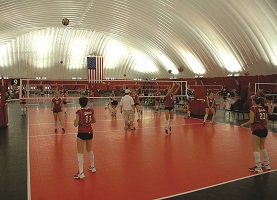
And sometimes, it’s the so-called ‘perfect storm’ of facilities that attract events and help make them successful. Ask Nancy Yawn why Round Rock is called the “Sports Capital of Texas,” and she’ll explain how the city’s first-class sports facilities and its infrastructure conspire to create an ideal environment for amateur, youth and recreational sports.
The $14.9 million Round Rock Sports Center has allowed the community to host not only indoor volleyball events but also several other indoor athletic competitions. An adjacent 15,000-square-foot open-air plaza featuring a recreational synthetic turf field, a playground, a concessions area and seating will open by year’s end, Yawn adds, and “enhance the experience for tournament participants and their families.’
Inside, the 82,800-square-foot sports complex boasts 12 hardwood volleyball courts (or six basketball courts), and CVB officials have partnered with local volleyball organizations to bring in at least six tournaments with a collective 6,300 players this year. Public schools, charter schools and homeschool associations also are using the facility for programs and tournaments.
“We’re excited that those groups also can come and share in the excitement of the facility,” Yawn says. “There was an underserved need here for indoor sports programs. This facility has opened up a whole new world for us.”
On the hardwoods, on the sand or on the grass, volleyball has made its presence known in the sports planning community as a force to be reckoned with.
Related Organizations
- Hampton Convention & Visitor Bureau
- Long Beach Convention & Visitors Bureau
- Rutherford County Chamber of Commerce
- Greater Wildwoods Tourism Improvement and Development Authority
- Conway Convention and Visitors Bureau
- Duncanville Field House
- Wisconsin Dells Visitor & Convention Bureau
- Round Rock Convention and Visitors Bureau

